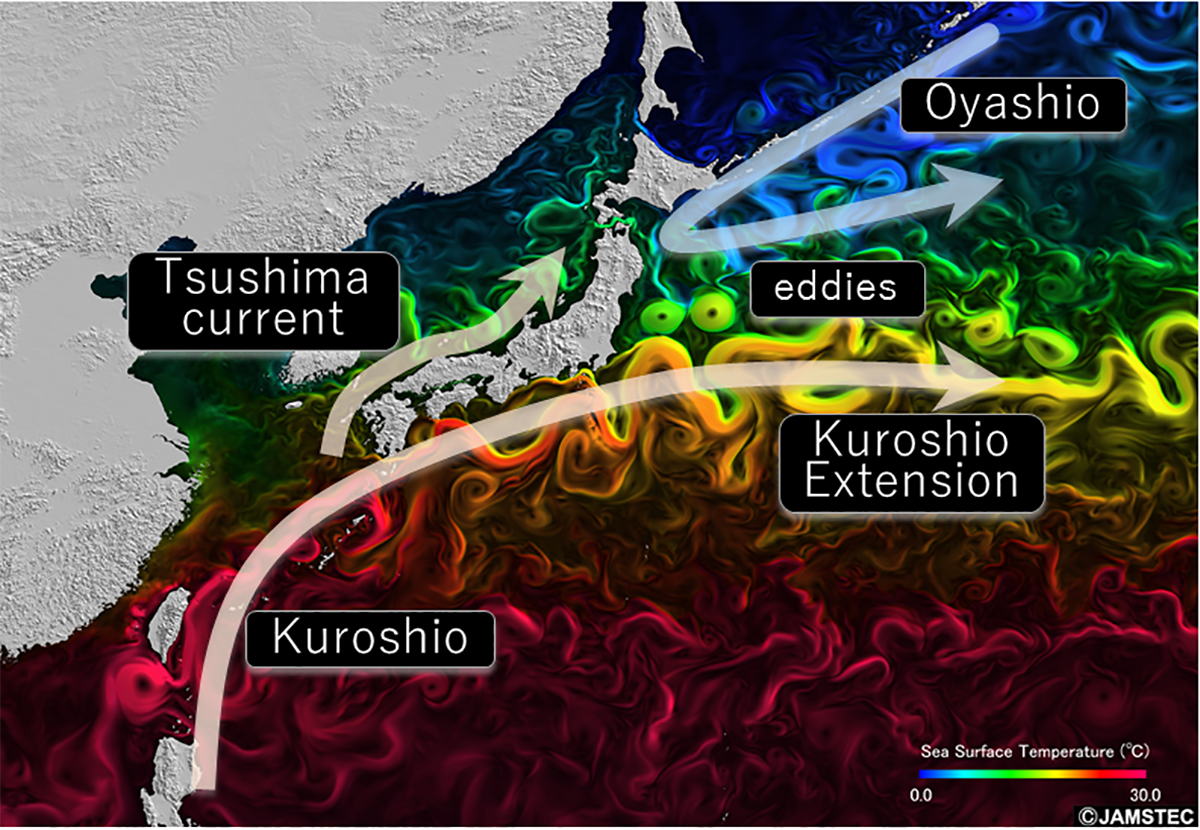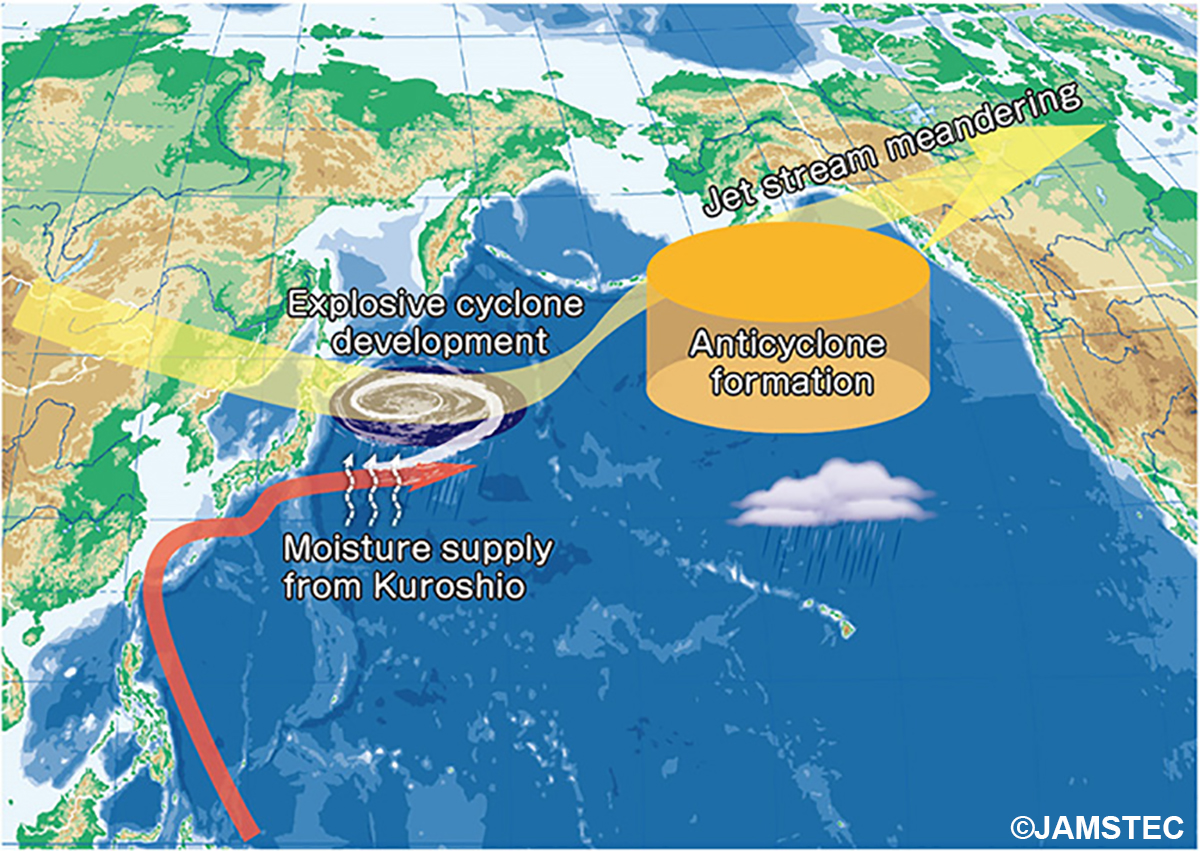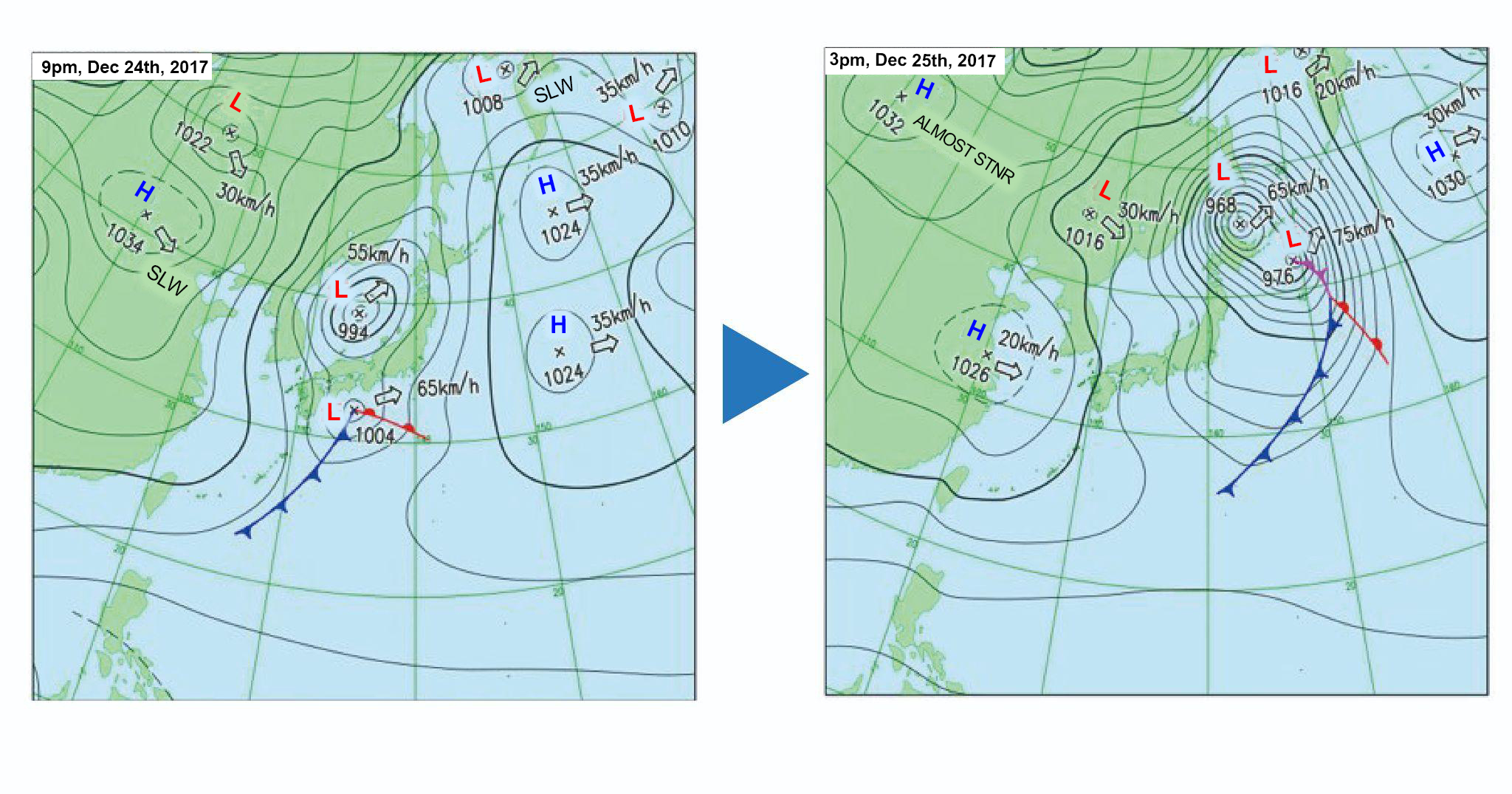Big Data analysis to understand atmosphere-ocean interactions
Research Highlight | August 04, 2023
This article first appeared in the special feature Understanding the Impact of Climate Change.
15 questions for climate change researcher Dr. Minobe (with subtitles).

Professor Shoshiro Minobe, Department of Earth and Planetary Sciences, Faculty of Science, Hokkaido University
To better explain and predict climate variability and change, it is essential to understand the interaction between the atmosphere and the ocean. Professor Shoshiro Minobe, who was selected as one of the 1000 most influential climate scientists in the world by Reuters in May 2021, spoke about his research into atmosphere-ocean interactions.
Atmosphere and oceans interact with each other
The atmosphere and oceans are responsible for transporting the heat received from the sun to all parts of the planet. The atmosphere and oceans also exchange heat and water with each other. Therefore, to understand the Earth’s climate, it is necessary to understand both the atmosphere and the oceans, and the ‘atmosphere-ocean interaction,’ which describes how the two interact with each other.
We are particularly interested in the influence of the ocean currents around Japan, such as the Kuroshio and the Oyashio, on the structure and variability of the atmosphere above. In fact, we have recently discovered that they have a very active and diverse influence.

The collision of the Kuroshio (warm current) and the Oyashio (cold current) in the seas around Japan. There is an active exchange of heat and water between the ocean and the atmosphere in this area. (Image provided by JAMSTEC)
Double bomb low that brought heavy snowfall to Hokkaido
Cyclones are atmospheric low pressure systems that cause rain and snow. The phenomenon in which the central pressure of a low pressure system drops rapidly is known as a ‘bomb cyclone’ because of the explosive development of cyclones. The mechanism for the development of a bomb cyclone is basically related to the north-south temperature gradient and the atmospheric heat associated with condensation of water vapor, as is the case with ordinary low pressure systems. Our analysis using a supercomputer has revealed that the heat carried from the tropics by the Kuroshio Current is the energy source that concentrates bomb cyclones around Japan. Furthermore, we found that the thermal energy of the Kuroshio Current also influences the atmospheric circulation and precipitation distribution in the North Pacific.

The influence of the Kuroshio Current on bomb cyclones and atmospheric circulation in the North Pacific. (Image provided by JAMSTEC)
What we are going to focus on in the future is research on ‘double bomb low pressure,’ which may increase damage to the surrounding areas. Originally, two low-pressure systems sometimes formed across Japan, known as ‘twin cyclones,’ but in 2017, a phenomenon occurred where both of the two low-pressure systems turned into bomb cyclones, which I named a ‘double bomb cyclone.’ Double bomb cyclone are an important phenomenon that has caused snowstorms in Hokkaido and snow accumulation in the Tokai and Kanto regions in the past. Therefore, I would like to clarify the characteristics of double bomb cyclones and understand whether they are related to global phenomena such as El Niño.

Weather map for 24 December (left) and 25 December 2017 (right). Two depression systems in the Sea of Japan and the Pacific Ocean approached each other while developing, resulting in a ‘double bomb cyclone’ near Hokkaido. (Adapted from the weather maps provided by Japan Meteorological Agency)
Decrease in dissolved oxygen concentrations in the ocean due to climate change
We also pay attention to changes in the oceans. The oxygen dissolved in seawater is important for marine ecosystems, including fish and crustaceans. Oxygen is supplied to the oceans from the atmosphere, and the lower the surface water temperature, the more oxygen dissolves into the ocean. The dissolved oxygen supplied at the ocean surface is then transferred to the deeper ocean through ocean circulation and mixing. However, as the surface temperature of the oceans increases due to global warming, the amount of oxygen dissolved into the oceans from the atmosphere decreases. Furthermore, as seawater near the surface warms and thus becomes lighter, the warmer seawater tends to stay near the surface, reducing the oxygen supply to deeper waters from the surface. These two effects of reduced dissolved oxygen concentration at the surface and reduced oxygen supply to deeper waters reduces the dissolved oxygen concentration in the ocean.
There is a concern that this effect will limit the habitats of fish and other marine animals that require oxygen. Indeed, a large-scale analysis of the marine ecosystem of the entire North Pacific Ocean carried out by our group showed a decline in the abundance of groundfish (fish that live near the bottom of the ocean, such as cod), and we suggested that one of the factors may be related to a decrease in the concentration of dissolved oxygen in the ocean. It is feared that the future global warming will cause serious damage to groundfish.
Studying the Earth’s climate by computer
At the large temporal and spatial scales we study, the research methods we use are essentially simulation or data analysis. Since it is not possible in practice to experimentally change climatic conditions on Earth, we use simulations to reproduce the Earth’s climate in a computer. With the development of computers, numerical models are becoming larger and larger; the Climate Research Center, which has many researchers and access to huge computers, is responsible for their development and computation. The results of these calculations constitute the Big Data of climate research. We combine the analysis of this big data with observation data, which are far fewer in number but very valuable. In recent years, the accuracy of simulations has rapidly improved with the advancement of computers. The evidence provided by simulations is a major reason why global warming is considered to be undeniably anthropogenic. By making full use of the rapidly developing simulation results in all directions, we expect to be able to make better use of valuable observational data and predict climate change, including global warming, more accurately.
Hokkaido University is excellent at earth and planetary sciences. In particular, research on the atmosphere and oceans has a strong global impact, partly because Hokkaido University has not only the Faculty of Science, but also the Institute of Low Temperature Science, Faculty of Environmental Earth Science, and the Faculty of Fisheries, which allows us to approach research from a variety of fields. Although my own research is carried out using computers, the Faculty of Fisheries at Hokkaido University has a training ship that can also sail the open seas, and researchers at our university conduct observation research in the Antarctic and Arctic Oceans, giving it an advantage in field observation. There are many excellent professors in each of the faculties and graduate schools, so I think it is a very good environment for students to learn.
Earth and Planetary Science at Hokkaido UniversityAccording to an analysis using the Web of Science, a global academic database, Hokkaido University has made significant achievements and is influential in the field of earth sciences, particularly in the field of ‘meteorology and atmospheric science.’ Hokkaido University is known for its Nobel Prize-winning chemistry and its agricultural sciences, which have a tradition dating back to the Sapporo Agricultural College; in fact, it also has a strong presence in the field of earth sciences. |
Written by Space-Time Inc.
Part of the special feature Understanding the Impact of Climate Change


